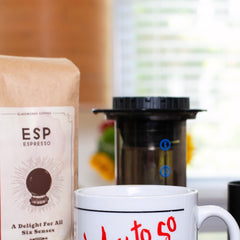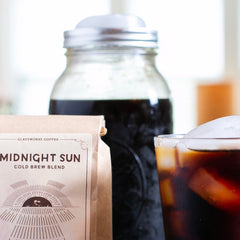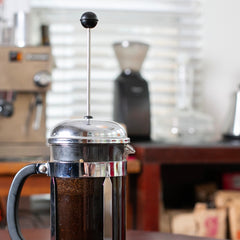Brew Methods
While there is no wrong way to enjoy a good cup of coffee, we at Glassworks are here to assist you in getting the most out it. Following these guidelines will be helpful regardless of your preferred brewing method, even a plug and play drip coffee maker (which there is nothing wrong with, if that's your thing). Don't be intimidated, it's all pretty easy, and you'll notice the results.
Ratios:
The optimal ratio between coffee and water varies based on your chosen brew method. Following these will help you to brew well balanced coffee and highlight each method's distinctive characteristics. We have outlined suggested ratios for each of the methods, but there is room to play depending on your personal preferences. Also included are the tools we suggest having on hand for each method, one of which is a simple digital kitchen scale that can read weights in grams. This will help you to weigh out the proper amount of coffee and water before getting started. That's right, I'm about to talk to you about the value of weighing water.
Water:
Weighing water, huh? Before you write me off as a maniac, please give me a moment to explain. In order to attain desirable ratios, you'll need the proper amounts of both coffee and water. Too much water will yield a sad and thin cup of coffee. Too little water will leave you with a thick and wild bean juice. Use your scale to measure both. We fully encourage you to do your own thing, but the recommended ratios offered within are a great starting place. Another tool that is very helpful in a variety of brewing methods is a gooseneck kettle, of which there are many options available.
Grind:
Another factor at play will be the coarseness of your grind. This will heavily impact the rate of extraction once water is introduced to the coffee. If your grind is too fine, the water will have to fight its way through the grounds and be exposed to more than the desirable amount of surface area, resulting in over extraction. Conversely, if your grind is too coarse the water will not meet enough resistance, preventing it from interacting with the coffee for the desired amount of time. This results in under-extraction. The most efficient path to precision coffee grinding is a conical burr grinder, of which there are many. Again, we've offered some guidelines in each brewing method of what you should look for when grinding your coffee. Another great way to judge if your grind is on point is time.
Time:
Tying everything together, paying attention to how long your coffee takes to brew can help you gauge if all of the above mentioned factors are within desirable parameters. If it takes too long, your grind is likely too fine. If it doesn't take long enough, it's likely too coarse. We highly recommend a handheld digital kitchen timer, but your phone probably has a stopwatch on it, or you might be someone that wears a watch.

All photos by Kristan Lieb




